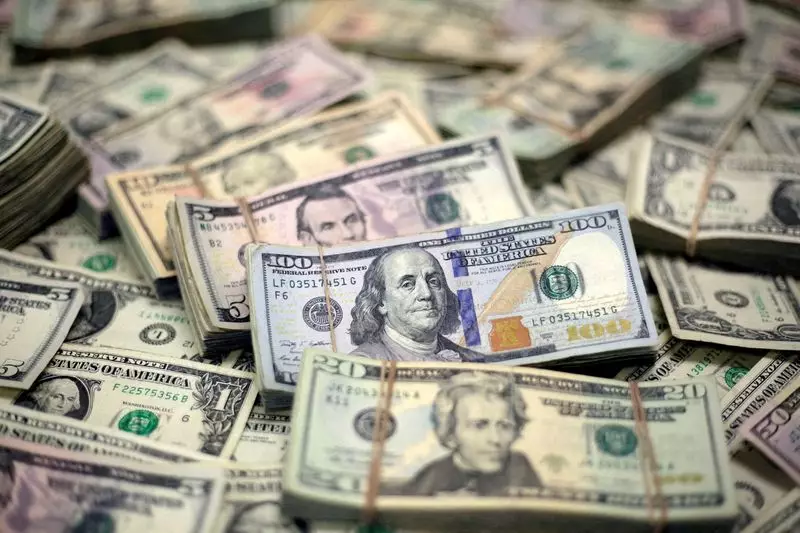As the sun rose over Asia on Monday, the U.S. dollar found itself on a downward trajectory. Investors, driven by the anticipation of significant macroeconomic shifts, were acutely aware that this week heralds the selection of a new leader in the United States. With growing speculation about an impending interest rate cut from the Federal Reserve, the dollar’s performance against other currencies illustrated increased volatility. By mid-morning, the dollar had weakened by approximately 0.9% against the Japanese yen, falling to a critical support level of 151.60.
The dollar index, a key measure of the currency’s strength relative to a basket of others, decreased by 0.3% to settle at 103.63. This decline indicated a shift in market sentiment, where investors were hedging bets on how the election outcome could influence economic policies and, consequently, the dollar’s status. The euro also benefited from this weakened dollar, gaining 0.6% and approaching key resistance at $1.0905, which traders closely monitored.
The forthcoming election has created a volatile political environment, with polling data showcasing a competitive race between the Democratic candidate Kamala Harris and Republican contender Donald Trump. The latest figures suggest that the candidates are nearly neck and neck, a fact that adds to the unpredictability of the future economic landscape. Market analysts speculate on the potential repercussions of each candidate’s policies, particularly in relation to inflation rates, bond yields, and overall economic growth.
Trump’s administration is often associated with aggressive fiscal policies that could spur inflation, tightening the correlation between economic growth and bond yields, which in turn would have a significant impact on the dollar’s value. Conversely, Harris’s campaign is perceived as more stable, reflecting continuity in economic management. This duality of perspectives has led traders to reassess their positions, often favoring a more cautious approach amid uncertainty.
Interestingly, a poll showing Harris’s unexpected lead among female voters showcased how demographics can influence political outcomes and market movements. Such subtle shifts in public sentiment resonate deeply within financial circles, prompting revisions in expectations and strategies.
Speculation around a potential interest rate cut by the Federal Reserve is another significant part of the puzzle. Market forecasts suggest a 99% chance of a quarter-point reduction, placing the target rate at 4.50%-4.75%. This chorus of expectations highlights the prevailing sentiment that lower rates are necessary to stimulate the economy amidst political uncertainty. Goldman Sachs has taken a more dovish stance, forecasting a series of cuts leading to a terminal rate of approximately 3.25%-3.5% by mid-2025.
The financial markets are also preparing for decisions from other central banks. The Bank of England and Sweden’s Riksbank are expected to follow suit, signaling their intent to ease monetary policy in response to rising economic challenges. The global focus on central bank actions underscores a collective strategy among nations to counteract economic headwinds that may arise following the U.S. elections.
Shifting the narrative to Asia, China’s National People’s Congress is convening during this pivotal week, with discussions predominantly revolving around economic revitalization efforts. Anticipations are that the Chinese government may approve the issuance of over 10 trillion yuan in extra debt, a significant move aimed at rebooting its slowing economy. This potential surge in stimulus measures reflects a broader trend among global economies preparing to face impending challenges.
Meanwhile, the British pound has exhibited some recovery from its recent slump, trading at $1.2994 as it seeks stability. The sell-off in British gilts following a controversial budget has stirred some instability, yet traders appear to be cautiously optimistic as they await further clarity from the Bank of England.
The intersection of political dynamics and economic performance creates an intricate web that investors must navigate. The upcoming election is not merely a domestic affair; it casts ripples across global markets, influencing currency valuations, bond prices, and broader economic forecasts. As uncertainty continues to loom, traders will need to rely on their analytical foresight and agility to adapt to rapid changes in market sentiment influenced by political developments, central bank policies, and global economic strategies. Only time will reveal the true impacts of this political crossroads on the market landscape.

